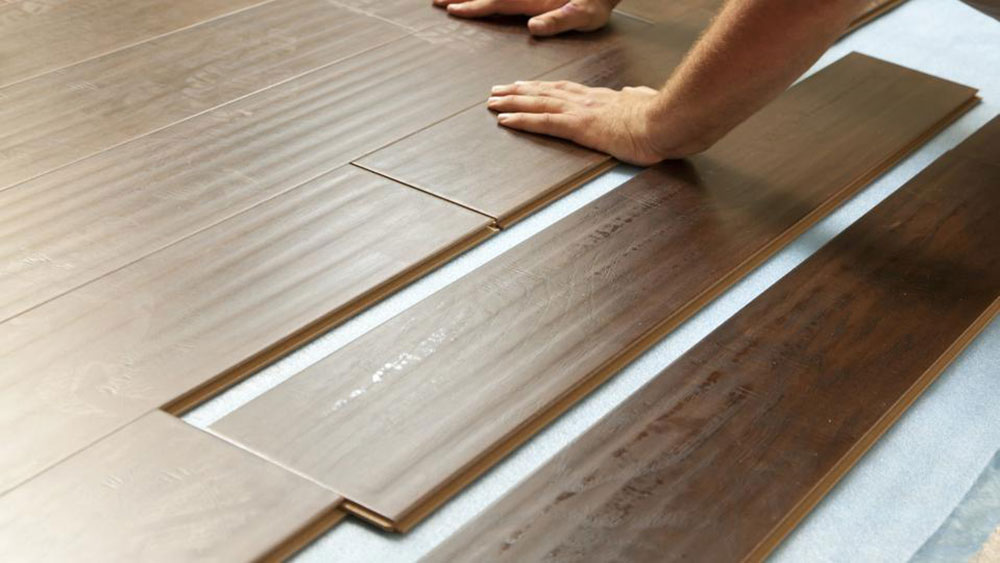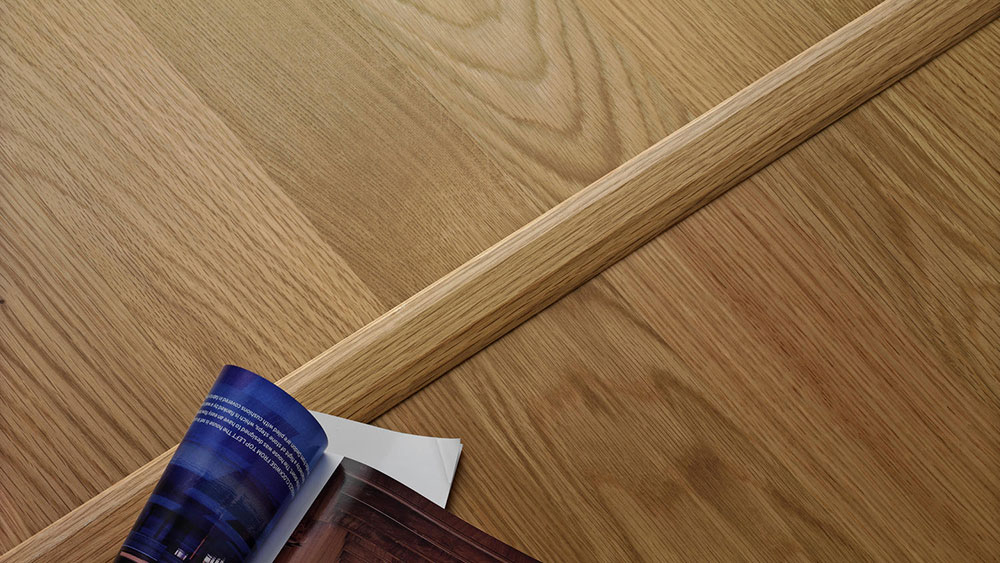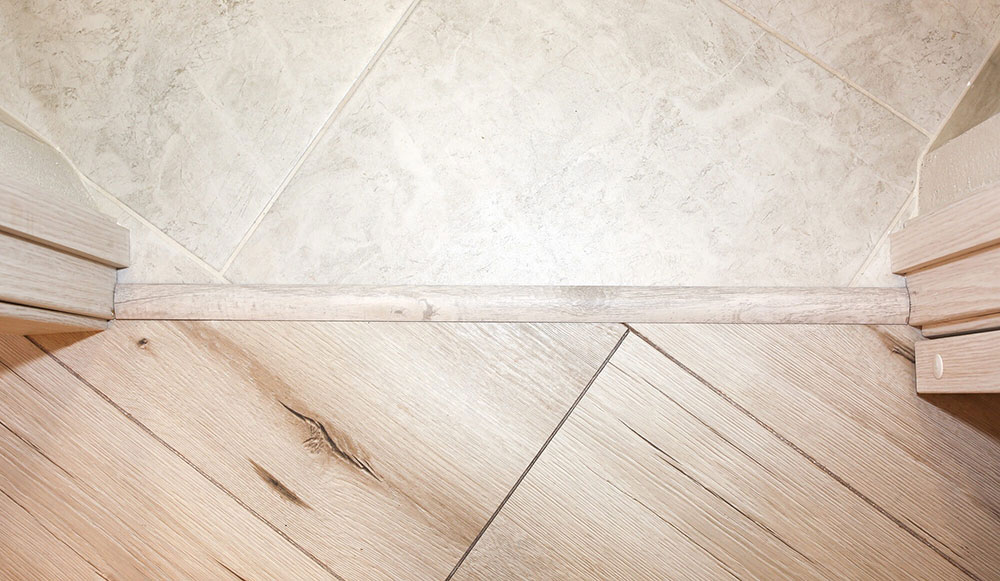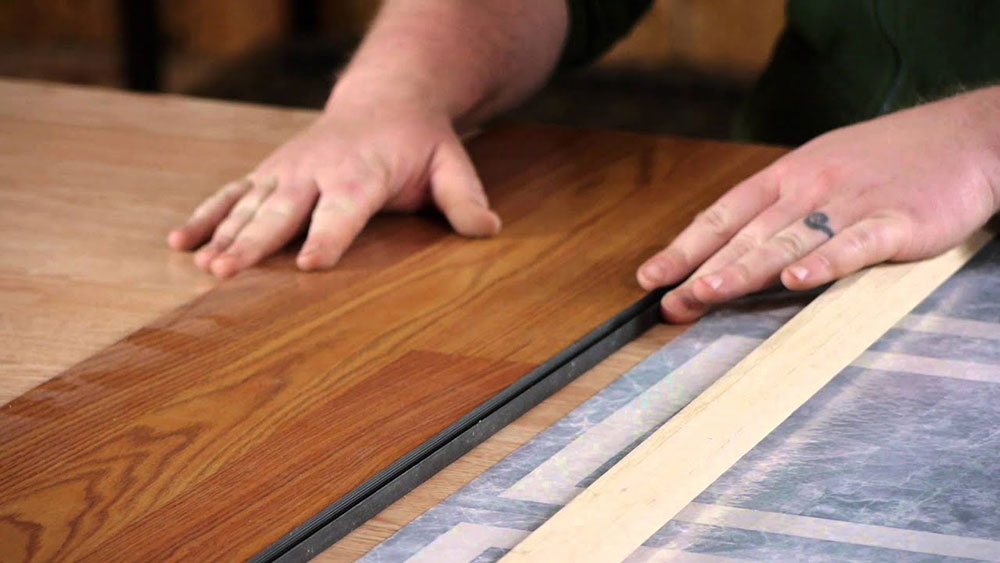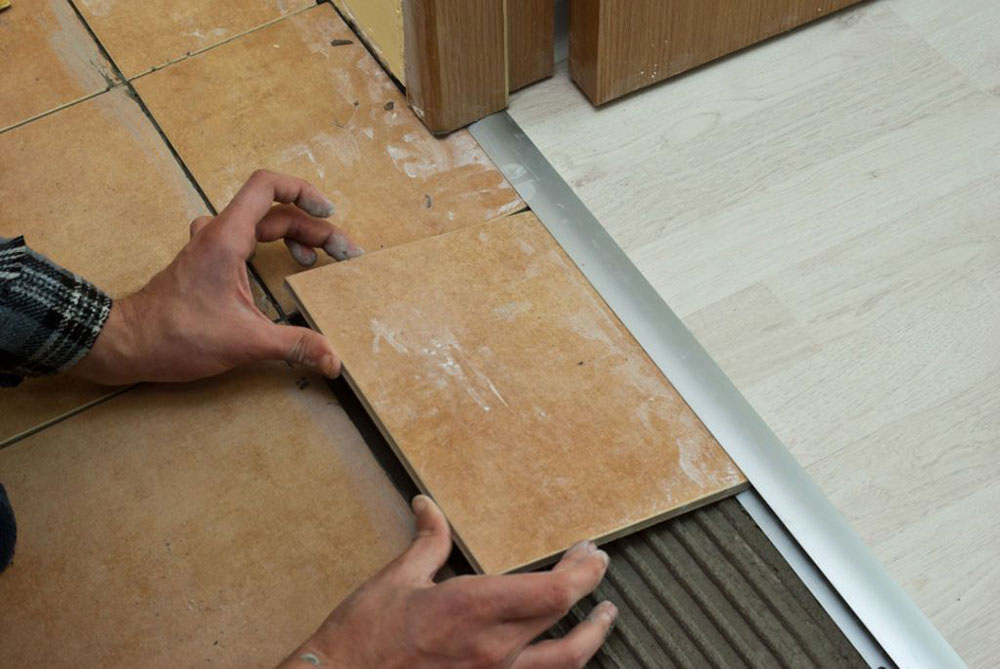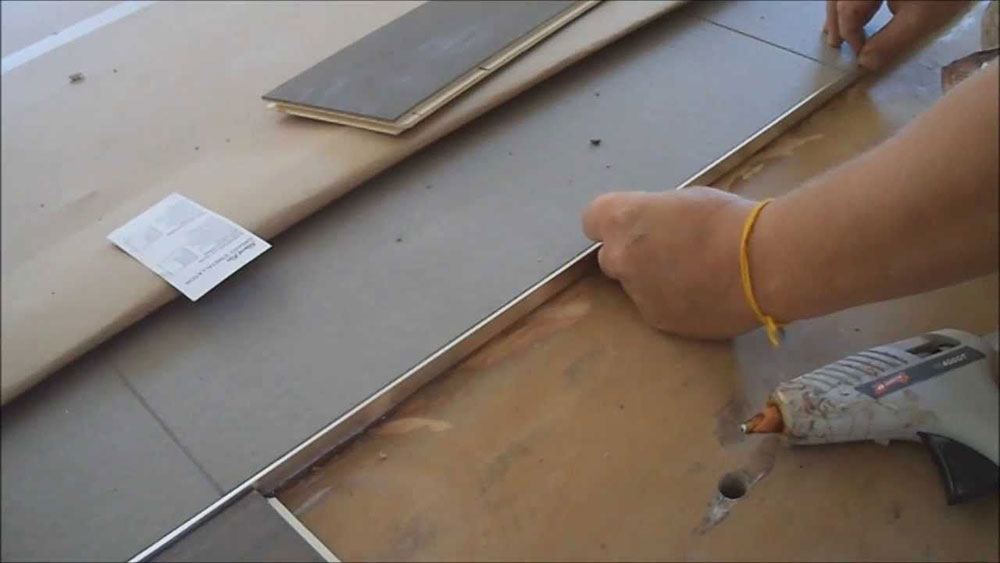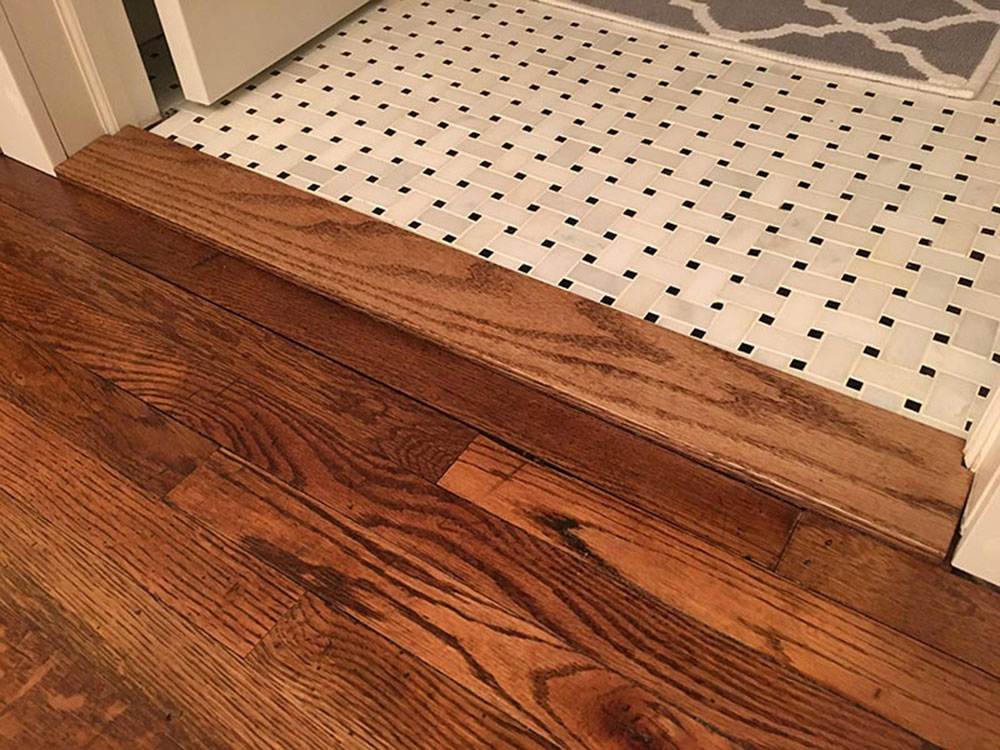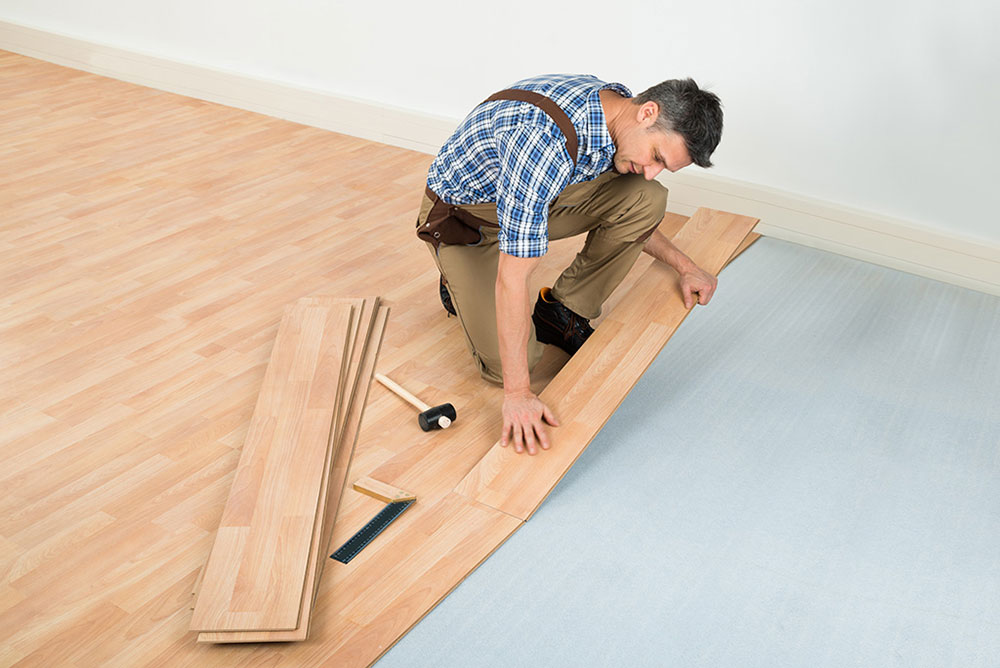Advertisement
So you want to know how to install laminate flooring without transitions?
Let’s dive in.
The quality of laminate flooring became better nowadays. This is a hybrid type of flooring. It is made of particleboard wood base and printed cover plus transparent protective layer on the top. People choose this type of flooring for the spaces with are not highly exposed to moisture or any kind of water – living rooms, bedrooms, hallways, gyms…
Installing laminate flooring in your house is a serious project. With proper tools and if you follow a couple of rules and steps, you can do it on your own. However, there are some problems after the installation. Some unpredictable things may happen. In this article on how to install laminate flooring without transitions, we will present to you some of the main things you should focus on.
For example, the new floor is not on the same level as the floor in the next room. These things may seem small, but they can make you lose your nerve. Luckily, there is a solution for this matter.
A simple piece of wood or metal, a transition strip, and you will get both neet look and make it safe. It is funny, but even the smallest difference in floor levels can cause people to trip and hurt badly. Also, it takes only about an hour to install it.
This may come as a surprise to some, but you usually can’t install laminate flooring in the entire house. That is almost impossible to do. In a single room – no problem, you can do it by yourself. But if you want to install laminate flooring in more than one room, that can be challenging, even for professionals. It is not a rare case to start the installing project and be forced to stop for a while, because of an unexpected issue.
When thinking about how to install laminate flooring without transitions, the good preparation before installing is essential. Inspect the entire location, every doorway. This will save you both time and nerves.
What are transitions and where are they used
Interior decorating in flats usually involves more than one flooring option. You may find carpets, hardwood, laminate, ceramic tiles… Even in the commercial space, there will always be at least two kinds of flooring.
If you decided to install either hardwood, ceramic or laminate, you will need the transitions.
These transitions are useful for two main reasons. Firstly, they ease the navigation from one room to another. They also visually divide rooms and different floorings. Transitions are installed only if there are doors in between the rooms.
Besides separation two different floor types, these strips are also useful for rooms that are not in the same level.
When installing laminate flooring, it can be set without the transitions. Yet, this will make the installation a lot more difficult. Having that in mind, you should make a plan a do a thorough preparation first. It is not impossible to achieve the flow in the installation and appearance. So how to install laminate flooring without transitions?
We will present to you some of the ways in which you can install the laminate flooring without the it.
Reducer
To deal with the issue of rooms not being at the same level, use this type of transition. For instance, it is often used as a shift from laminate to the vinyl floor or tile to laminate alteration. This is a type of mold that is bent at one side and also secured to a track. Its dimensions are about 94 inches long.
Tile-to-Laminate Transition
This kind of transition is used for crossing from tile to laminate floor. It often occurs laminate floors to be lower than the ceramic tile floor. The reason is the tile is laid over a cement subfloor. On the other hand, laminated has a foam underlayment underneath the boards. This kind of transition mold adapts to floors of different thicknesses as it is constructed with offset grooves.
Choosing right direction
To gain a more fused look, you should take into account the direction of laying the laminate boards. This is often the key to a good visual merge of two different floorings. It is more effective if the laminate flooring in the entire house (or the apartment) is positioned in the same direction.
If you are not sure which direction that might be, just follow the orientation of your house. The direction is determined by the shame of the house. The laminate boards should be following the longest line of the house plan. Of course, you don’t have to follow this rule but take it into consideration.
For example, it is more pleasing to the eye to have the boards laid parallel in front of the entrance.
Planning for avoiding transitions
As we already mentioned, installing transitions is not a rule. Actually, many people like the flooring better without the transitions. This will take more time and effort as it is a more complicated option. Thorough preparation is a must. Examine all the floors, watch for the doorways.
It is very important to measure the level of humidity in the rooms where you do the installation. Open the boxes containing the laminate boards and let them sit for a couple of hours to adapt. Laminate planks are affected by moisture and they always expand to a certain rate.
Also, when installing the laminate, leave out some space, a couple of inches, away from the walls. After the boards fully adapt, they will expand a bit. If there isn’t enough space left, the boards will push the walls and lead to buckling. Don’t forget to read the manufacture’s instructions.
If you set the laminate boards in an equal direction in the entire house, you probably won’t need to use the transitions.
Placing the laminate planks around the cabinets or doorways can be tricky. They can be positioned either parallel or perpendicularly. If you want to keep the doorways without the transitions, set the full planks. You will get an edge suitable for connecting perpendicular planks. To make this as simple as possible, keep laying the boards in the same direction.
Laying the entire floor
Installing laminate floor in the whole house may seem like an easy DIY project. However, you cannot ignore all the walls and doors dividing the space. These should always be taken into the account. You shouldn’t look at the house like a one big room.
After you take care of all the obstacles and tricky areas, you now have an easier part of the job. Installing the laminate in individual rooms is relatively simple. Like a puzzle and another DIY task you can finish for one weekend.
Follow the direction of the house and start setting boards from the furthest part of the room. Use a saw to cut the doorjamb.
Keep in mind that if you don’t have the transition, there won’t be any space for laminate to expand and contract.
FAQs about installing laminate flooring without transitions
1. Is it possible to install laminate flooring without transitions?
Yes, laminate flooring can be installed without transitions. The installation process is meticulously planned and carried out, the appropriate tools and methods are used, and the flooring is ensured to be level and properly aligned. Although it is a trickier process than installing using transitions, it can produce a smooth appearance that makes the trouble worthwhile.
2. What is the best way to install laminate flooring without transitions?
Using a floating installation technique, which entails putting the flooring boards over an underlayment that is installed on the subfloor, is the ideal approach to install laminate flooring without transitions. The planks are then attached to one another with an adhesive or click-lock method. To produce a smooth and seamless surface, it is crucial to make sure the flooring is level and the planks are evenly spaced and placed.
3. Can I use a floating installation method for laminate flooring without transitions?
Yes, the most popular method for installing laminate flooring without transitions is the floating installation method. Without fastening the planks to the subfloor, this includes laying the planks over an underlayment that has been set up on the subfloor. As a result, there is no need for transition strips to create a smooth and continuous surface because the planks can expand and compress as necessary.
4. What tools do I need to install laminate flooring without transitions?
You will need a number of instruments, such as a saw, hammer, tapping block, spacers, measuring tape, and a level, to lay laminate flooring without transitions. Depending on the particular installation needs, a jigsaw, circular saw, or other cutting equipment may also be required. To guarantee that the installation procedure runs easily and effectively, it is crucial to have the appropriate tools on available.
5. Do I need any special skills to install laminate flooring without transitions?
The flooring boards must be measured, cut, and aligned in order to install laminate flooring without transitions. It is good to have some DIY project expertise, but being a professional is not required. Most homeowners may effectively lay laminate flooring without transitions with the correct equipment and methods.
6. How do I ensure that my laminate flooring is level when installing without transitions?
Starting with a level subfloor can help to ensure that your laminate flooring is level when installed without transitions. Check the subfloor for any high or low locations and make any necessary modifications using a level and straightedge. The use of spacers to keep the distance between the flooring planks and the wall constant and the use of a tapping block to make sure that each plank is properly seated and aligned are also essential.
7. What type of underlayment should I use when installing laminate flooring without transitions?
Utilizing an underlayment appropriate for the particular subfloor type and installation technique is crucial when laying laminate flooring without transitions. Foam, cork, and rubber are a few common underlayment types. It is crucial to pick an underlayment that is suitable for the installation, will offer the required support, and will absorb sound.
8. How do I transition from laminate flooring to another type of flooring without using a transition strip?
You can use a T-molding or reduction molding instead of a transition strip to change from laminate flooring to another form of flooring. Without the use of a transition strip, these moldings are fitted in between the two types of flooring to give a seamless transition. To get a smooth and coordinated appearance, it is crucial to select molding that complements the color and design of your flooring.
9. Can I install laminate flooring without transitions on stairs?
On stairs, laminate flooring can be installed without transitions, but it requires specific tools and methods. To make the transition from the laminate flooring to the stairs seamless, utilize stair nosing and treads. To ensure safety and durability, it’s crucial to pick materials that are appropriate for use on stairs and to make sure the installation is done correctly.
10. How do I deal with doorways when installing laminate flooring without transitions?
It’s crucial to plan for doors and room transitions when installing laminate flooring without transitions. To create a transition between the flooring in one room and the flooring in another, one choice is to utilize a threshold molding. In order to accommodate the flooring underneath door jambs and casings, it is also possible to undercut them, resulting in a seamless transition that does not require a threshold. A seamless and uniform appearance throughout your home can be achieved with careful planning and execution of the installation process.
Ending thoughts on how to install laminate flooring without transitions
Maybe the best crossover from one room to another is to create a transition that is not one. So, if you’re wondering how to install laminate flooring without transitions – just lay the boards like walls don’t exist and notch the boards around. Use a saw to create the notches so they fit under the doorjambs. This way they’ll blend and it will seem as it is all one continuous piece.
You don’t have to be a professional to install the laminate in an individual room. But, setting it in the entire flat or house is more difficult. Even the greatest experts find it challenging. There is a high risk if you don’t plan it in advance that you will encounter a problem.
This article, Youtube, tutorial videos you watch on how to install laminate flooring without transitions could be more than helpful to eliminate all the troubling factors.
If you enjoyed reading this article about how to install laminate flooring without transitions, we also wrote on how to remove glued down laminate flooring, how to end laminate flooring at doorways, how to install laminate flooring on a concrete basement floor, how to dry laminate flooring with water under it, how to seal laminate flooring seams, how to install laminate flooring on walls, how to repair swollen laminate flooring, how to repair laminate flooring, how to install laminate flooring on stairs, the best waterproof laminate flooring brands, and how to stagger laminate flooring.

